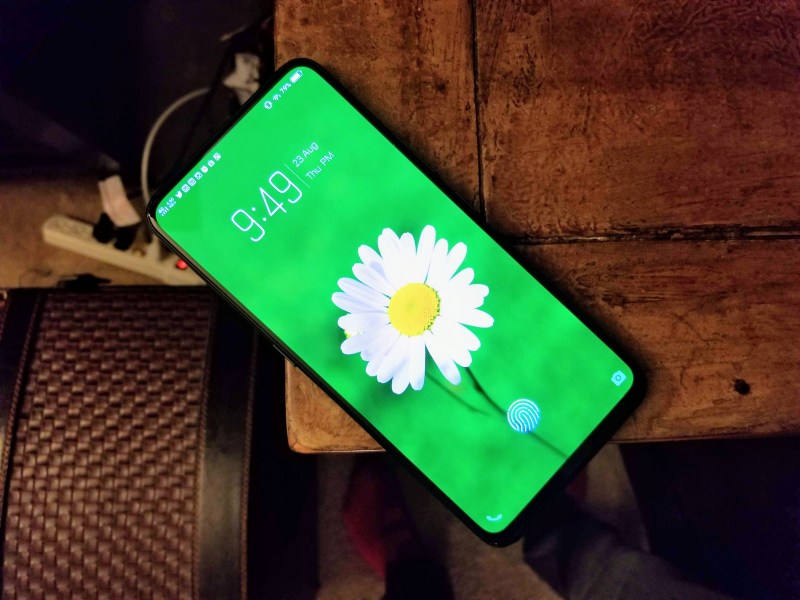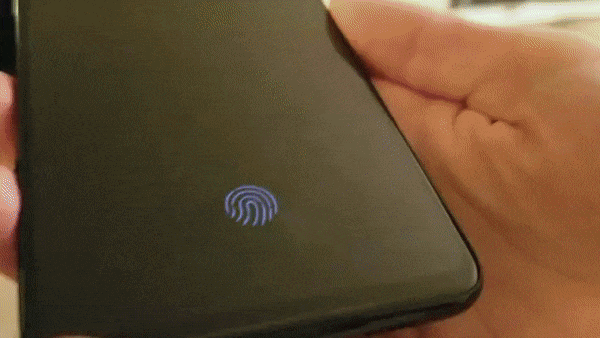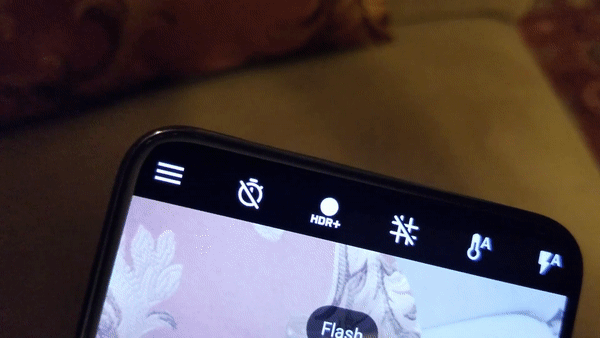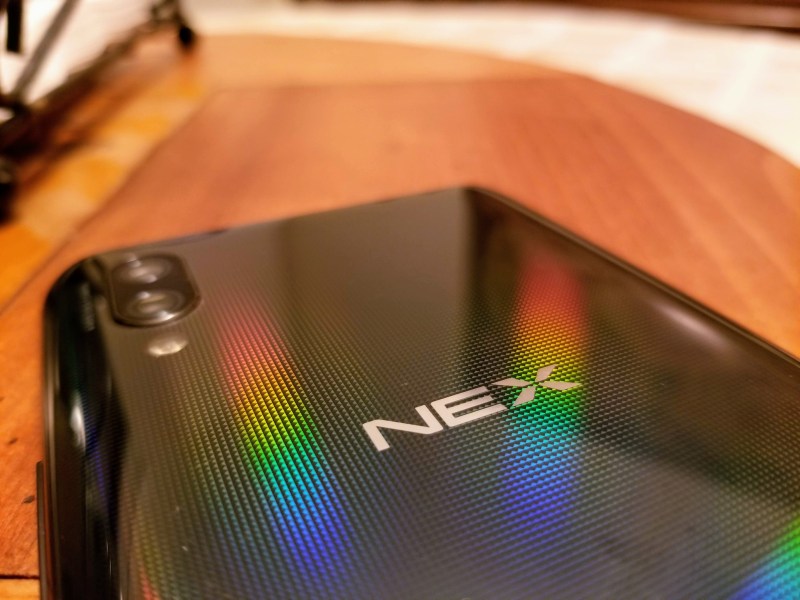When Chinese smartphone company Vivo, a subsidiary of OnePlus parent BBK Electronics, announced the Vivo Nex in June, it came as something of a surprise. Just months earlier, at the Mobile World Congress 2018 in February, the electronics maker took the wraps off a radical new smartphone — the Vivo Apex — with an edge-to-edge screen, a fingerprint sensor embedded beneath the display glass, and a motorized, retractable front-facing camera. It was strictly a concept, the company said at the time, and months — or even years — from commercialization.
But improbably, Vivo wrangled enough component suppliers to mass produce it. The phone launched in China earlier this year as the Vivo Nex (and Nex A) and globally as the Vivo Nex S. So how does one of the most intriguing phones in recent memory stack up to the competition? In short: not as you would expect.
Design
Smartphones don’t get much more “bezeless” than the Nex S. If the borders around its screen were any thinner, I’d worry about losing my grip on the darn thing. It’s 1.17mm thick all around (with the exception of an ever-so-slightly wider chin at the bottom), giving the Nex S an impressive screen-to-body ratio of 91 percent — the second-highest of any smartphone on the market (after the Oppo Find X).
Viewed from the front with the screen on, the Vivo Nex S is drop-dead gorgeous. It’s massive, measuring 162x77x7.9mm, and you’ll struggle to find a heavier phone — at 199g, it weighs substantially more than Apple’s iPhone X (174g) and Samsung’s Galaxy Note 9 (163g). But Vivo has cleverly distributed the weight along the device’s curved, iridescent glass back. And thanks to the edge-to-edge design, the Nex S doesn’t feel particularly large. I don’t have to shimmy my hand up the phone’s sides to reach the top of the screen, and I can easily tap every button — the power button and volume rocker on the right and the programmable action button on the left — one-handed.
June 5th: The AI Audit in NYC
Join us next week in NYC to engage with top executive leaders, delving into strategies for auditing AI models to ensure fairness, optimal performance, and ethical compliance across diverse organizations. Secure your attendance for this exclusive invite-only event.

There’s something futuristic about a nearly bezeless screen without any notches to speak of. It’s not the best display I’ve laid eyes on, mind you — the 6.59-inch 2316×1080 Super AMOLED panel isn’t as bright or vibrant as my trusty LG G7 ThinQ’s LCD, and its viewing angles are nothing to write home about. But the curved, razor-thin edges are arresting.
It’s worth noting, of course, that the Vivo Nex has a PenTile pixel arrangement. The red subpixels and blue subpixels that make up the panel are interleaved with green subpixels; effectively, there are two blues and two reds for every green. The result is a slightly blurrier picture than is produced by conventional RGB screens, but I struggled to notice it in my testing. Your mileage may vary.
That’s not the only compromise Vivo made in pursuit of an all-screen design. The Nex S isn’t waterproof or dust-resistant, and it doesn’t support NFC or wireless charging. You won’t find a microSD slot onboard, which means you’ll have to make do with the 128G (or 256GB, depending on the model) of onboard storage. But it’s not all bad news: A 3.5mm headphone jack sits next to the USB Type-C port, an increasing rarity in flagship smartphones.
Fingerprint sensor and speakers

Above: The Vivo Nex S’ in-screen fingerprint sensor.
The Vivo Nex S is one of the first handsets to boast an optical fingerprint sensor, joining Huawei Porsche Design Mate RS, Vivo’s X20 and X21, the Oppo R17, and the Xiaomi Mi 8 Explorer Edition. Here’s a quick primer: When one of your digits makes contact with an illuminated spot on the lower portion of the screen, a camera beneath the glass snaps a picture. Then a machine learning model analyzes roughly 300 different fingertip characteristics (for example, the distance between finger ridges) and stores the unique pattern to memory.
It worked well in my testing, for the most part. It wasn’t noticeably slower than the dozens of conventional fingerprint sensors I’ve tried, and the setup process was a breeze.
I only wish it was more forgiving. Activating the optical scanner requires giving the phone a slight nudge or picking it up from the table, and it rarely snaps a clean scan the first time around. In my testing, it took about two or three attempts — exerting a bit more pressure on the screen, angling my finger to one side or another side — to get it to register.
The in-display speaker is a different story. Vivo opted to embed the earpiece within the screen to cut down on bezel width — it calls the technology Soundcasting. An actuator vibrates the top third of the display glass, where your ear naturally rests during phone calls, to produce sound. It’s not a novel idea, but the company claims the Nex’s V1 digital audio converter (DAC) and three amplifiers deliver a better experience than competing solutions, like that in Xiaomi’s Mi Mix.
I wouldn’t go quite that far, but I can confirm that calls sound crisp, clear, and free of distortion. In any case, it’s better than Vivo Nex’s bottom-firing conventional speaker, which tends to overemphasize bass at the expense of treble. It’s not the worst I’ve heard on a smartphone, but it misses the high mark set by the likes of Samsung and LG. (Also disappointing: It doesn’t support stereo audio.)
Cameras

Above: The Vivo Nex S’ pop-up selfie camera.
There’s a lot to say about the Nex S’ cameras. Let’s start with the more unusual of the two: the front-facing camera.
It’s embedded in a plastic strip that extends from a recess on the top of the phone as needed, whenever an app — be it the default camera app, Snapchat, Facebook, Instagram, Twitter, etc. — accesses Android’s camera API. Exit said app, and it retracts. It’s a quick (under two seconds) and mostly silent affair, but an optional setting lets you mask its mechanical whir with one of three cheesy sound effects (Sci-Fi, Machine, and Rhythm).
Mechanization is a clever solution to the Nex S’ “bezel problem,” but I couldn’t help wondering about the durability of the moving parts. The ejection motor was strong enough to resist my finger (and automatically retracted when I pushed on it with force), but I worry what might happen after it’s been dropped on concrete or caught in a pocket or used thousands of times over the course of years.
Vivo, no doubt anticipating those questions, made it eminently clear in marketing materials that the camera has been tested to withstand up to 45kg of force when fully extended. But lab results are no substitute for real-world testing, and only time will tell how well it holds up to everyday drops, bangs, and scratches.
All that aside, the 8MP (f/2.0 aperture) front sensor takes decent, but not exceptional, selfies. I was impressed by the amount of light it managed to capture indoors and at night, but I disappointed by the noisiness of the final results. As for the Nex S’ Face Beauty feature, which purports to use artificial intelligence to smooth out wrinkles, blemishes, and other dermatological imperfections, it’s also a mixed bag — skin with the effect applied took on a blurred, pastel-like appearance that I wasn’t especially fond of.

I was much more impressed with the dual rear cameras — a 12MP sensor (f/1.8 aperture, 1.4-micron pixels) and a 5MP one (f/2.4 aperture) — which are easily some of the best I’ve tested recently. The 12MP sensor boasts both four-axis optical image stabilization (OIS) and electronic image stabilization (EIS), and it shows — rarely did my shaky hands result in blurry photos. The color reproduction matches that of flagships like the LG G7 ThinQ and Huawei Mate 10, albeit with a greater emphasis on warm hues and tones. And the phase detection autofocus (PDAF) is incredibly fast, even in challenging conditions, like direct sunlight.
Less exceptional is the dynamic range. Even with high dynamic range (HDR) enabled, subjects tended to look flat without a post-session touch-up. And although images were consistently sharp, shadows often lacked fine details, particularly in low light.
I’m no videographer, so I didn’t test the Nex S’ video as extensively as some reviewers. But in the interests of thoroughness, I captured a clip at 4K at 30 frames per second (fps) — the maximum supported resolution. (Other flavors are 1080p and a 720p slow-motion mode that shoots 240fps.) Thanks to the combination of OIS and EIS, it came out smooth as glass — if a bit more compressed than I would’ve liked.
Camera fanatics will be pleased to know that the Nex S’ app has options coming out the wazoo. There’s standard fare, like panorama and timelapse modes, and a Snapchat Lens-like AR Stickers feature that superimposes cat whiskers, glittery stars, and other cute cosmetics onto your skin. In selfie mode, you can trigger snapshots the conventional way, by tapping the on-screen shutter button, or by holding up your palm or saying “Cheese.” And in professional mode, settings like ISO, shutter speed, white balance, and autofocus can be configured and reconfigured to your heart’s content. (I found the balance tool, which uses the phone’s accelerometer to help line up shots, particularly handy.)
Most phones have some sort of bokeh mode that blurs out backgrounds while bringing the foreground into focus, and the Nex S is no exception. It simulates the effect in software for selfies, and for shots with the rear camera taps both sensors. The results were occasionally good, but more often than not they were marred by blurring around faces and objects.
As one of VentureBeat’s resident AI reporters, I’d be remiss if I didn’t mention AI Scene Identification. When enabled, this setting uses machine learning to “balance the lighting” of photos and “determines the ideal exposure.” Unfortunately, it’s difficult to tell which settings it’s adjusting — and even more difficult to tell the difference those adjustments are actually making. I’d have liked to see Vivo take a cue from LG’s AI Cam, which is much more transparent about its “optimizations.”
Performance
When it comes to raw performance, the Nex S is among the cream of the crop. It’s packing Qualcomm’s top-of-the-line system-on-chip, the Snapdragon 845, paired with a whopping 8GB of RAM and 128GB (or 256GB, depending on the model) of internal storage. A 4,000mAh battery easily lasts a day and a half off the charger, and a wall adapter supports fast charging.
There are no two ways about it: This phone flies through tasks like few others I’ve tested. Rows of app shortcuts render at the speed of light (or pretty darn close to it). Apps launch instantaneously. And scrolling latency — the lag time between a finger gesture and an onscreen response — is practically nonexistent. In this regard, the Vivo Nex S feels every bit its price tag.
To evaluate the Nex S’ performance a little more objectively, I loaded up Geekbench 4, a popular mobile benchmarking suite. The Nex S earned an 8,732 multi-core score, putting it slightly ahead of the Galaxy S9 and LG G7 ThinQ.
Funtouch OS: Anything but fun
The Nex S ships running Android 8.1 Oreo, but it’s far from vanilla — Vivo’s proprietary Funtouch OS overlays every panel and settings menu. And that’s to its detriment.
Take the Vivo Nex S’ automatic brightness, for example. Unlike most other phones I’ve used recently, the Nex S seems to adjust brightness in large “steps,” rather than gradually. Normally, that wouldn’t bother me, but the steps tend to leave noticeable gaps. Quite often during my testing, I’d walk outside into the sunlight and watch it brighten only slightly — not nearly enough to make out what was on the screen.
Another annoyance? Funtouch’s iOS-like control center. Rather than relegating toggles for Wi-Fi and Bluetooth connectivity, Do Not Disturb mode, and tethering to the notification shade, like the vast majority of third-party Android skins, Vivo stuck them in a panel that can only be accessed with a swipe upward from the bottom of the screen. It’s not the worst idea in the world — it’s akin to iOS’ Control Center. But what’s harder to forgive is the fact that it doesn’t work consistently. In my testing, pulling up the menu usually took multiple swipes.
Funtouch OS’ notification shade is similarly inspired by iOS. Incoming alerts are rounded, transparent, and larger than average, which makes scrolling through them a lot more tedious than it needs to be. This has the unintended side effect of making the buttons beneath notifications — like the Reply button under a Gmail alert — more difficult to reach one-handed.
Other points worth mentioning:
- The settings menu lacks a search bar.
- Funtouch OS’ default launcher (home screen) doesn’t have an app drawer. If you want the traditional Android experience, you’ll have to download a third-party alternative from the Play Store.
- There’s a good deal of bloatware, including Amazon, WPS Office, Facebook, Newspoint, UC Browser, and PhoneFe.
- Funtouch OS doesn’t have a facial recognition feature to speak of — you’ll have to settle for fingerprint or password unlocking.
- Jovi, the umbrella brand for Vivo’s suite of AI tools, is a bit half-baked. There’s a Game Mode that “[enhances the] in-game user experience” (it’s not always clear how), and Smart Button, which lets you reassign the Vivo Nex’s Google Lens key, but that’s all there is to it. (The Chinese variant is a bit more capable, apparently — it recognizes over 600 voice commands in Mandarin, allowing you to do things like change settings and accept money from friends in WeChat group conversations.)
- Notifications from the default web browser can’t be muted.
To be clear, Funtouch OS isn’t completely without merit. I liked the gestures feature, which lets you assign (and customize) swipes to apps and navigation keys. The multitasking menu — a horizontal carousel of running apps — is an improvement over Android 8.1 Oreo’s vertical list of cards. And a few of Funtouch OS’ “smart features” are genuinely useful, like Smart Click, which lets you reassign the volume rocker to perform a function like recording audio or launching the camera, and Smart Split, which optionally displays messages from Facebook Messenger, Android Messages, and other apps in a floating window.
But Funtouch OS feels generally unfinished, overwrought, and sorely lacking polish.
Conclusion
So who’s the Vivo Nex S for, really?
From a strictly pragmatic point of view, I’d hesitate to say it’s for U.S. customers, who can’t get their hands on one without importing it from overseas. The Nex S will be available in Russia, Hong Kong, India, Malaysia, and Taiwan soon, but there‘s no word on a stateside launch.
It’s also not compatible with every major U.S. carrier. And it’s relatively expensive — the price in China is 3,900 yuan, which converts to about $600.
But all that aside, it’s a matter of priorities. Despite the Vivo Nex S’ noteworthy cameras, performance, and design, it feels prototypical in every sense of the word. The screen isn’t as good as it could be, the front-facing camera isn’t as good as it should be, and I’d hesitate to call Funtouch OS any derivation of the word “good.”
That’s a long-winded way of saying it’s less than the sum of its parts.
Bezeless phones are the next big thing — that much is clear. Samsung and Sony are expected to throw their hats into the ring sometime next year, and smartphone makers like Oppo and Xiaomi are already iterating on their respective edge-to-edge designs.
But unless you’re desperate for a taste of the future that’ll leave you wanting, the Vivo Nex S isn’t for you. Here’s my advice: If you have the patience, wait a bit. Let Vivo’s ideas germinate. When the second-gen Nex S comes around, you’ll be glad you sat this one out.





